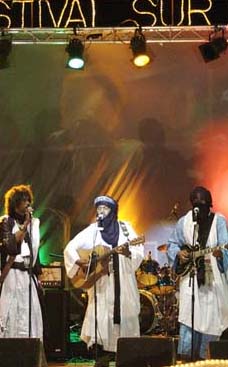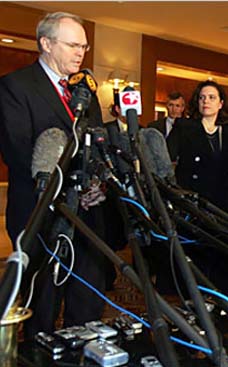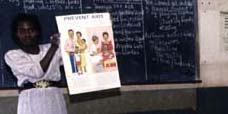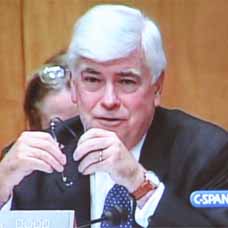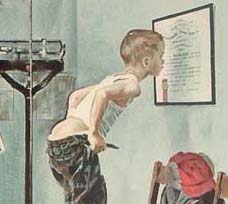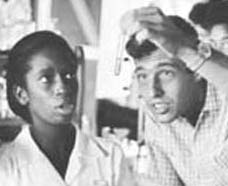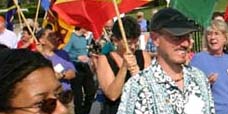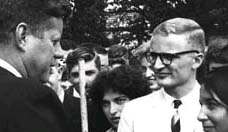
On the afternoon of November 30, as Durian pounded the Philippines with 260 kilometer-per-hour (162 miles-per-hour) winds and relentless rains, a massive volcanic mudslide from the slopes of Mount Mayon hurled black ash, water and boulders the size of bedrooms on villages at its base.Padang and villages in the neighboring city of Daraga recorded some of the highest casualties from Durian. In Padang, dozens were reported dead and as many as 165 listed as missing. Most of the 508 families in Padang lost at least one member. Julia Campbell is a former journalist from New York City volunteering with the U.S. Peace Corps in the Philippines.
PCOL Comment: Peace Corps Volunteer Julia Campbell has been missing since April 8 in a mountainous northern area about 160 miles north of Manila Campbell, 40, was last seen in the town of Banaue in Ifugao province, where she had planned to hike alone. The area is famed for its mountainside rice terraces and pine forests. The New People's Army also operates there.
Philippines Peace Corps Volunteer Julia Campbell writes: Heartbreak, laughter merge for typhoon survivors
Heartbreak, laughter merge for typhoon survivors
POSTED: 0202 GMT (1002 HKT), December 10, 2006
By Julia Campbell
For CNN
PADANG, Philippines (CNN) -- A woman has slipped into the daily disaster relief meeting at Padang Elementary School almost unnoticed, until she was asked later to introduce herself. "Paseniya Na Po. I'm sorry," says the woman, apologizing for being late to the debriefing. "They have just found my son."
The body of her son, Cristo Rey Baltar, a college student who would have celebrated his 18th birthday on December 28, was pulled from the mass of volcanic ash, boulders and water that swallowed this village when Typhoon Durian -- called Reming by Filipinos -- caused devastating mudslides here on November 30.
"It's so hard to lose a child, even if I have so many," says the woman, Alicia Baltar, a mother of 10. Baltar, a 50-year-old village councilwoman, was spared because she was helping others evacuate to the school. Her son Cristo was helping members of their family climb to safety on a roof when the strong floodwaters swept him away, she says.
All that is left of the fishing and rice farming community of Padang, a village of the city Legaspi, is a few crumbled concrete homes, some visible rooftops, bare trees and dozens of traumatized people.
On the afternoon of November 30, as Durian pounded the Philippines with 260 kilometer-per-hour (162 miles-per-hour) winds and relentless rains, a massive volcanic mudslide from the slopes of Mount Mayon hurled black ash, water and boulders the size of bedrooms on villages at its base.
Padang and villages in the neighboring city of Daraga recorded some of the highest casualties from Durian. In Padang, dozens were reported dead and as many as 165 listed as missing. Most of the 508 families in Padang lost at least one member.
"Once I look at this place I am just crying," says Renato Gonzalez, 26, who survived, but lost his mother, wife and their 1-year-old son. "I live near the river. My house became part of the river and it was gone. There is nothing left."
Gonzalez tells how his family was torn from his arms as muddy water and black ash poured inside his concrete home. Gonzalez says he survived when he was sucked outside and thrown into a tree, his clothes ripped from his body. Gonzalez, four other men, and a woman all scantily dressed or naked, clung to the same tree for 27 hours.
"There was no rescue," he says. Instead, others around them cried for help. "There were so many people who wanted to live. But because there was no rescue, they were too cold and did not survive."
Mercy Arquero, 35, and her husband, Arthur, 37, tried desperately to hang on to their four children as water and mud came crashing into the larger concrete home where they had sought shelter from the storm.
"The water was strong," says Mercy, who is four months pregnant and is covered with wounds and bruises. "We were just yelling and praying. We tried to break open the roof as the water rose inside the house. I was washed away holding my youngest child." The Arqueros lost three of their four children, all girls, ages 11, 4, and 1, with only 10-year-old Almera surviving. "It's so painful," says Arquero, "especially since I haven't found any of my other children."
School provides shelter
Many survivors found their way to the local elementary school. The school now serves as an evacuation center for dozens of families. It stands as the last cluster of intact buildings in Padang.
After the storm, relief workers and volunteers began to hike into the area -- the highways had been covered with mud -- and a woman offered to show the way. "Come with me," she said in her native language. "I am staying there. I have nothing. I lost my husband and four other members of my family."
As relief goods trickle in, people are sleeping 10 families to a classroom each night at the school. Food, fresh water and sanitation are chief concerns now. Healing the psychological wounds may be an even greater concern later on. The mothers say the children have been staring at each other or nothing at all for days. At night, screams can be heard from classroom to classroom as children waken from nightmares.
A group of U.S. Peace Corps volunteers stationed in the area arrived at Padang last Monday to help and began to play games and sing songs with the children to relieve stress. Smiles and laughter returned again.
" Filipinos are fighters. Life must go on even though we suffer very much." - Jason Bataller
But the trauma is still evident in the drawings the children colored for the volunteers. When asked to draw the "Pinakamaganda," (Tagalog for "most beautiful thing") in their lives, most of the students colored Mount Mayon, which is known as the world's most perfect cone volcano and a symbol of pride and beauty for people here, even though it was the very thing that swallowed up their parents, siblings, uncles and grandparents.
"This is my house," said one little boy, explaining his picture. "It's under the volcano."
Filipinos talk about their resilience. In August Mount Mayon spewed lava and gas forcing the evacuation of thousands of people from its space. Just two months ago, Typhoon Melania ripped through this area destroying power lines and infrastructure, but caused few casualties. The people had just begun to recover when calamity struck again.
For many Filipinos, coping with hardship is made easier by believing in God's will. The popular belief, "Bahala na ang Diyos," literally means it's up to God.
Filipinos also deal with tragedy through laughter. There is a joke going around the "jeepney" -- the half-jeep, half-bus contraptions that serve as the chief mode of transportation in the Philippines -- of a man who dropped hot noodles on his lap and yelled "Su mami," triggering a tsunami scare after the typhoon that reportedly killed one and injured dozens when hundred of people in Legaspi panicked and ran for higher ground. The false alarm actually was caused by an errant radio report.
But through all the laughter and tears, Filipinos say they will move on.
"Filipinos are fighters," says Jason Bataller, a food vendor from Padang who is volunteering at the evacuation center. "Life must go on even though we suffer very much."
Julia Campbell is a former journalist from New York City volunteering with the U.S. Peace Corps in the Philippines.






